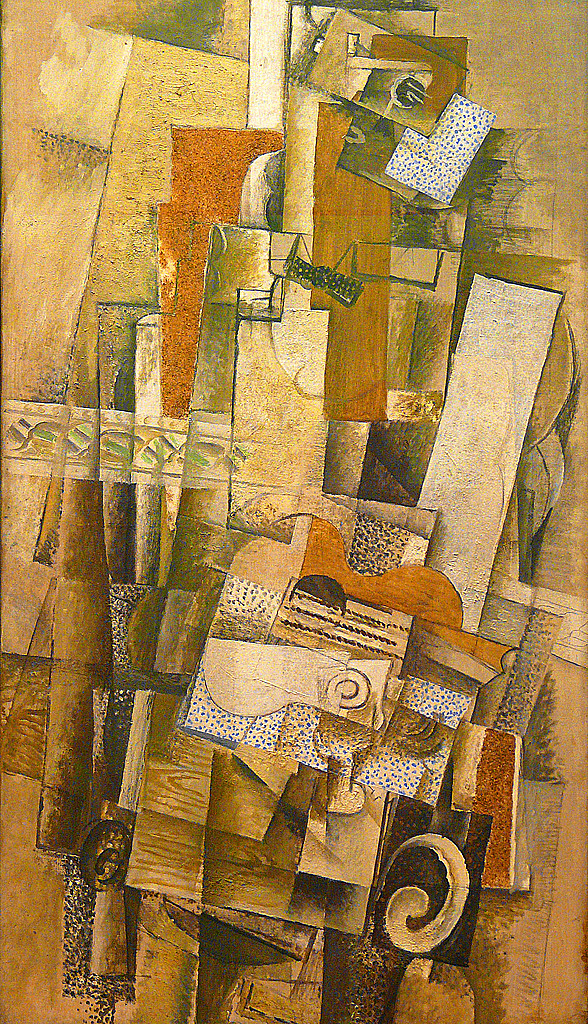Cubism began as a movement in the visual arts, whose main proponents were Pablo Picasso and Georges Braque.It went through two main stages: analytic cubism which focused on the geometric forms that make up objects, and synthetic cubism which recombined these geometric forms into new abstract forms. The breaking of forms into abstractions was an attempt to view objects from multiple angles simultaneously on a two-dimensional surface. Cubist art also incorporates elements of collage and later, bits of text and even found objects.
 "L'Homme à la Guitare" by Georges Braque, 1914, Musée d'Art Moderne | Public Domain.
"L'Homme à la Guitare" by Georges Braque, 1914, Musée d'Art Moderne | Public Domain.
Map of Cubist Manifestos
While Cubism does not have an official literary manifesto, Guillaume Apollinaire introduced the idea of bringing cubist elements into writing in “Les Peintres Cubistes” (1913), included in this database. Cubist writing coincided with more general modernist avant-garde aesthetics like experimenting with syntax and punctuation, wordplay, and fragmented style. Beyond techniques like free verse, cubist writers were interested in the visual arrangement of text on the page, often creating pictures out of words. Writers like Max Jacob and e.e. cummings wrote about and embodied these techniques in their writing. Pierre Reverdy’s journal Nord-Sud published some significant pieces of cubist writing. Appollinaire’s calligrams (Horse Calligram is included in the database and others are shown below) typifies the blend of art and writing that characterizes Cubist writing.
 "Calligrams" by Guillaume Apollinaire, 1920, Cahiers Individualistes De Philosophie Et D’Art, October 1920, Blue Mountain Project, Princeton University | Public Domain.
"Calligrams" by Guillaume Apollinaire, 1920, Cahiers Individualistes De Philosophie Et D’Art, October 1920, Blue Mountain Project, Princeton University | Public Domain.
References
Cabanne, Pierre. Cubism. Paris: Terrail, 2001.
Cox, Neil. Cubism. London: Phaidon, 2000.
“Cubism.” "Encyclopædia Britannica Online", Encyclopedia Britannica Inc, 2020.
Brogan, J. V, and B Tate. “Cubism” The Princeton Encyclopedia of Poetry and Poetics, Princeton University Press, 2012.
Elizabeth Cowling. “The Cubist Painters / Apollinaire and Cubism.” The Modern Language Review. Belfast: Modern Humanities Research Association, 2004
Winn, Howard. “Cubism.” Pennsylvania Literary Journal 6, no. 3 (2014): 140.